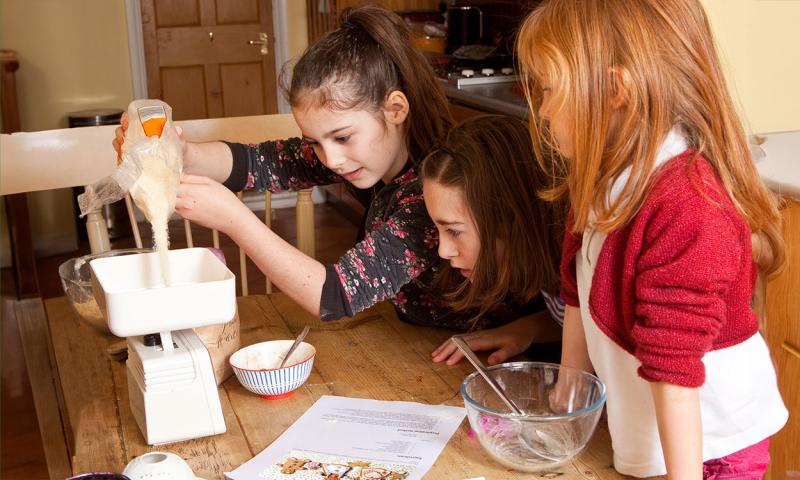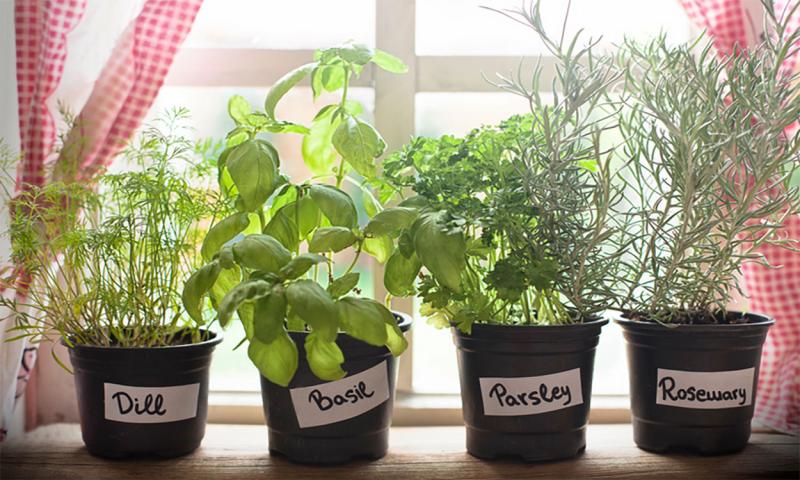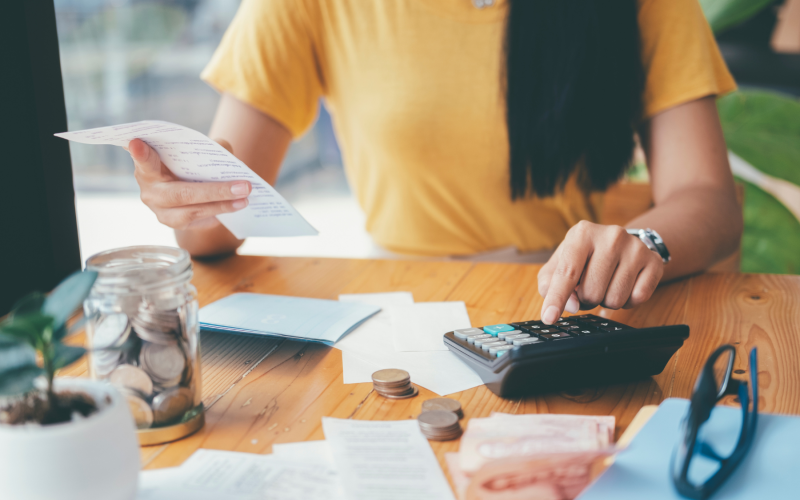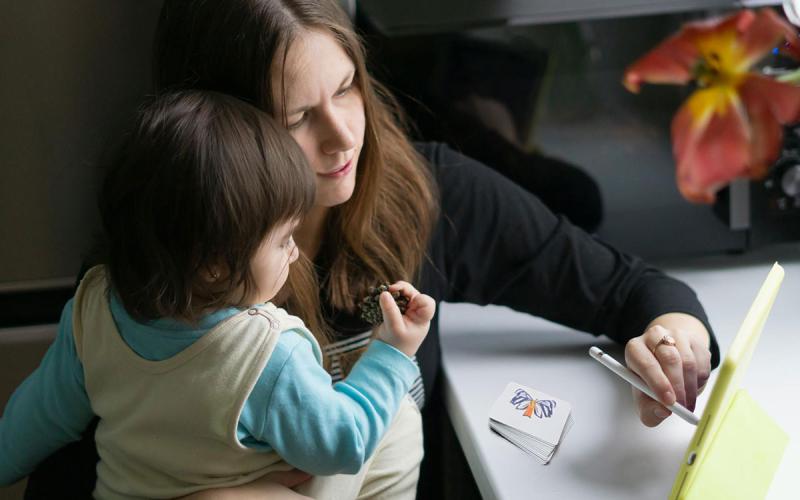Written by Anna Tvedt, former SDSU Extension Nutrition Field Specialist.
Children can learn valuable lifelong skills in the kitchen: measuring ingredients, assessing ripeness, following a recipe, using small appliances, and much more. Have you ever considered that these life skills double as math and science skills? The kitchen is a great classroom! Children may not even realize they are learning because they see it as fun, as a way of gaining independence, or as helping out.
Below are 24 ideas to get you started teaching math and science in the kitchen. Lists are sorted approximately from the most-basic to the most-advanced skills.
Math

- Identify shapes, colors, and sizes of ingredients, such as fruit and vegetables, as they are prepared.
- Count items as they go into a recipe, such as strawberries into a blender for a smoothie.
- Estimate the number of an ingredient by its measure, such as “how many chunks of sweet potato do you think are in one cup?” Measure and then count.
- Learn order and sequence by following a recipe.
- Practice time math by calculating cooking time, such as, “It is 12:20 p.m. now and the recipe takes 45 minutes to bake. What time will it be done?”
- Plan for cooking by creating a time table of how long each step will take and the equipment needed at each step.
- Practice budgeting, addition, multiplication, and estimation by keeping a running total of the grocery costs while shopping.
- Practice fractions by using measuring utensils or by slicing a food (such as pizza) and point to one or more slices to create a fraction.
- Convert fractions and decimals when looking at a recipe, such as 1 and 1/2 cups can also be written as 1.5 cups.
- Convert between different measurements, such as “The recipe calls for 2 Tablespoons. How many teaspoons would that be?” or, “We are doing 3 times a recipe that calls for 3 Tablespoons. How much do we need in cups?”
- Read and understand the serving size and amount of nutrients from a nutrition facts label. Add, multiply, or divide by quantities in a recipe to get the total per serving of a prepared dish.
Science

- Plant a window herb garden. Let children tend to the plants as they grow and prepare the recipe when they are used.
- Melt and boil an ice cube to identify solid, liquid, and gas states.
- Observe chemical reactions, such as baked goods rising or bread toasting.
- Discuss food quality by describing appearance, texture, flavor, and smell.
- Make predictions. “What will the food smell, look, and taste like when it is ready to be eaten?”
- Categorize foods into flavor groups by doing taste tests: bitter, salty, sour, sweet, and umami.
- Teach cross-contamination and food safety by sorting foods in a grocery cart or refrigerator and using different cutting boards for raw meat and ready-to-eat foods.
- Compare how long it takes for a cut apple to become brown when left plain versus coated with lemon juice.
- Show the parts of an egg (shell, membrane, thin egg white, thick egg white, yolk, chalaza, and airspace), as it is cracked into a pan.
- Explain that foods that are dried or frozen can last longer because they have less water, which bacteria need to grow. Show the difference in shelf-life between a dried, frozen, and fresh fruit by comparing ‘best-by’ dates.
- Compare cleaning dishes with cold water and hot water to show that heat speeds up the chemical particles of food, causing them to detach from the dish faster.
- Discuss chemical reactions that change foods, like onions caramelizing, yeast making bread rise, or oil and vinegar emulsions.
- Experiment with a cookie recipe to learn the qualities of baking ingredients, such as flour gives structure, fat holds ingredients together, sugar tenderizes, and baking soda and liquids leaven. Keep a log of the ingredients and observations.
The time will fly when making these experiences fun and full of learning. The more these activities are done, the more cooking can become like a review game for each skill that was learned. Let's not forget the best part: the tasty rewards!


